Unveiling Epang Palace Ruins: The Legacy of the Qin Dynasty
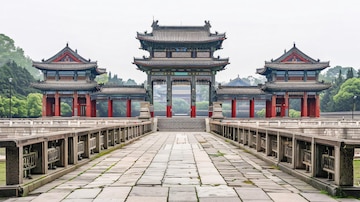
An Essential Guide to Visiting Epang Palace Ruins
In This Guide
- An Essential Guide to Visiting Epang Palace Ruins
- The Rich History and Legends of Epang Palace Ruins
- Main Highlights: What You Absolutely Can’t Miss
- Planning Your Visit: A Practical Guide
- Tickets: Prices, Booking, and Tips
- How to Get There: A Complete Transportation Guide
- Local Cuisine and Accommodation Nearby
- Frequently Asked Questions
- Final Thoughts on Your Trip
Nestled in the historical heart of Xi’an, the Epang Palace Ruins stand as a testament to the grandeur and ambition of China’s first emperor, Qin Shi Huang. Known for his monumental achievements, including the Terracotta Army and the Great Wall, Qin’s vision for the Epang Palace was nothing short of colossal. Described by the renowned Tang dynasty poet Du Mu as a “splendid and luxurious palace,” the ruins evoke a sense of mystery and intrigue, reflecting a bygone era steeped in rich history and cultural significance.
A Rich Tapestry of History
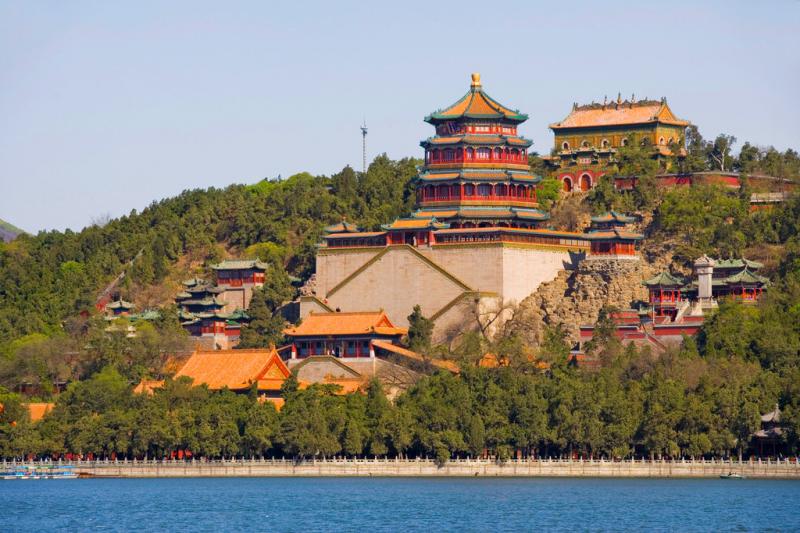
Epang_Palace_Ruins.
The Epang Palace, although never fully completed, was intended to be the centerpiece of Qin Shi Huang’s imperial dreams. It is said to have been a palace of unparalleled opulence, drawing inspiration from the conquered states of Qi, Chu, Yan, Han, Zhao, and Wei. Despite its eventual destruction by a peasant uprising at the end of the Qin dynasty, the site remains a cultural touchstone, recognized by UNESCO as “the first historic palace under heaven.”
Exploring the Ruins and Park
Today, visitors can explore the Epang Palace Archaeological Site Park, which beautifully preserves the remnants of this monumental structure. The park spans over 780 acres and features reconstructed elements designed to transport guests back to the Qin dynasty. Here, you can wander along ancient pathways, admire the impressive rammed earth foundations, and immerse yourself in the grandeur of what was once an imperial palace.
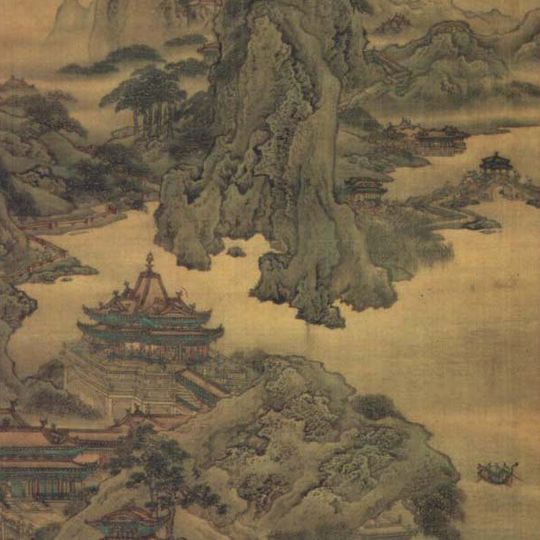
Epang_Palace_Ruins.
Visiting Insights
Whether you’re a history buff, a cultural enthusiast, or simply seeking a picturesque spot to spend a day, the Epang Palace Ruins offer a unique glimpse into ancient China. The park is adorned with blooming purple leaf plum trees, creating a stunning backdrop for picnics and leisurely strolls. Additionally, engaging cultural programs and exhibitions provide a deeper understanding of the Qin dynasty’s impact on Chinese history.
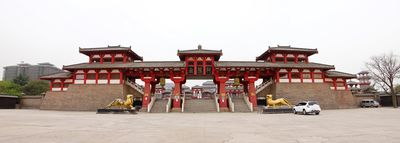
Epang_Palace_Ruins.
Prepare to step into a realm where history comes alive, and the echoes of the past resonate through the ruins of the Epang Palace.
The Rich History and Legends of Epang Palace Ruins
The Epang Palace Ruins, steeped in mystery and grandeur, are a testament to the ambitious vision of Emperor Qin Shi Huang, the first sovereign of a unified China. Though the palace itself was never fully realized, its legends and remnants offer a captivating glimpse into the opulence and aspirations of the Qin Dynasty.

Epang_Palace_Ruins.
A Vision of Grandeur
Constructed in the 3rd century BCE, the Epang Palace was envisioned as a magnificent royal residence that would symbolize the might of Qin Shi Huang. According to historical accounts, notably by the Tang dynasty poet Du Mu, the palace was a sprawling complex adorned with lavish halls and exquisite gardens, meant to rival any structure of its time. This monumental project was intended not only as a palace but also as a cultural hub, reflecting the emperor’s desire to consolidate power and unify the diverse states he had conquered.
The Flames of Insurrection
The palace’s story took a tragic turn at the end of the Qin dynasty. It is said that during the farmer uprisings, the Epang Palace was set ablaze, marking the fall of Qin Shi Huang’s empire. However, intriguing archaeological findings have led experts to re-evaluate this narrative. Despite the historical belief that the palace was destroyed by fire, excavations conducted in 2006 revealed no conclusive evidence of carbonization or remnants of a grand structure. This has led scholars to suggest that the Epang Palace may have existed more in the realm of imagination than reality, a dream of architectural grandeur that never fully materialized.
UNESCO Recognition
In 1994, the United Nations Educational, Scientific and Cultural Organization (UNESCO) recognized the ruins of Epang Palace as “the first historic palace under heaven.” This acknowledgment underscores the cultural significance of the site, despite the uncertainty surrounding its physical existence. Today, the Epang Palace Ruins serve as a reminder of the Qin Dynasty’s remarkable contributions to Chinese civilization, including its legal and administrative reforms, as well as the unification of the Chinese script.

Epang_Palace_Ruins.
The Epang Palace Resort: A Modern Tribute
To honor the legacy of the Epang Palace, the surrounding area has been transformed into the Epang Palace Resort, sprawling over 780 acres. This site features reconstructed elements reflective of the original palace, such as the Lanchi Palace and the Tiantai Watchtower. Visitors can immerse themselves in Qin culture through various programs and exhibits, including cultural performances and imperial banquets. The resort aims to recreate the splendor of Qin-era life while providing modern amenities, including hot springs and leisure activities.
A Lasting Legacy
The ruins of the Epang Palace, with their sprawling earth foundations and symbolic significance, represent a pivotal chapter in Chinese history. They stand as a monument to the vision of a unified state under Qin Shi Huang and the cultural aspirations of the time. Visitors to this historic site can reflect on the legends and realities of the past while enjoying the serene beauty of the surroundings, making it an essential stop for anyone seeking to understand the rich tapestry of Chinese history and culture.
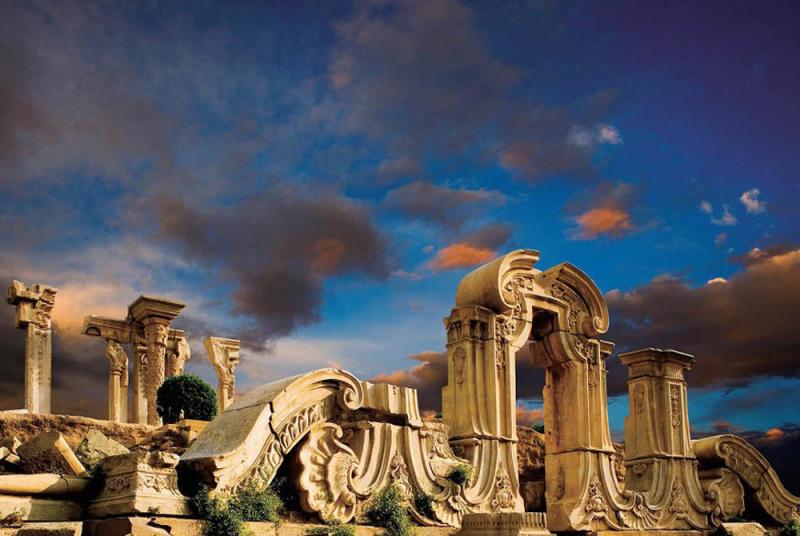
Epang_Palace_Ruins.
As you wander through the park, imagine the vibrant court life that once thrived here, and let the whispers of history inspire your journey into the heart of ancient China.
Main Highlights: What You Absolutely Can’t Miss
Discovering the Epang Palace Ruins: A Journey Through Time
The Epang Palace Ruins, a remarkable archaeological site located near Xi’an, invites travelers to delve into the illustrious history of China’s first emperor, Qin Shi Huang. Although the palace itself was never fully completed, its legacy looms large in the annals of Chinese history, making this site a must-visit for anyone interested in the cultural heritage of China. Here are the key highlights you absolutely can’t miss during your visit to this historic location.
1. The Grandeur of the Ruins
- Explore the Remnants: The site spans a vast area of approximately 780 acres, featuring impressive earthworks that hint at the grandiosity of the original design. Walk along the ancient pathways and observe the remains of foundational structures that evoke the splendor of what the palace might have looked like.
- Front Hall Platform: One of the most notable features is the massive rammed earth platform, known locally as “Meiwu Ridge.” This impressive structure, measuring about 1,270 meters long and 426 meters wide, served as the foundation for the palace’s main hall.
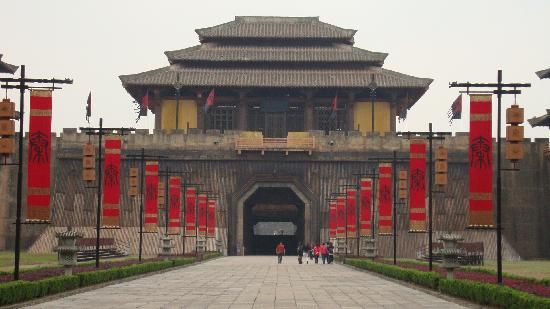
Epang_Palace_Ruins.
2. Cultural Exhibitions
- Qin Culture Show: Engage with the rich heritage of the Qin dynasty through live performances and exhibitions that bring ancient customs and traditions to life. This immersive experience offers insights into the cultural practices of one of China’s most influential dynasties.
- Qin Afang Palace Ruins Exhibition Hall: Located nearby, this exhibition hall showcases artifacts and detailed narratives of the Qin dynasty. The displays include statues, totems, and historical accounts that paint a vivid picture of the era.
3. Natural Beauty and Scenic Views
- Flower Sea: Visit during spring to witness the breathtaking sight of blooming purple leaf plum trees. The landscape transforms into a vibrant sea of flowers, perfect for leisurely strolls, picnics, or simply soaking in the beauty of nature.
- Recreational Activities: The park offers ample space for outdoor activities such as kite flying, picnicking, and family gatherings, making it a serene escape from the hustle and bustle of city life.

Epang_Palace_Ruins.
4. Architectural Insights
- Archaeological Discoveries: Learn about the ongoing archaeological efforts that continue to reveal more about the site. Although the palace never reached completion, excavations have uncovered various structures, corridors, and artifacts that provide invaluable insights into the architectural ambitions of the Qin dynasty.
- Cultural Tourism Area: The surrounding cultural tourism section is being developed to further enhance visitor experiences, showcasing the integration of modern urban planning with historical preservation.
5. Access and Amenities
- Convenient Location: The Epang Palace Ruins are easily accessible from Xi’an, making it a convenient day trip. Public transportation options, including bus services, are available for hassle-free travel.
- Visitor Services: The site is equipped with amenities to ensure a comfortable visit, including tourist service centers and information points to guide you through your exploration.
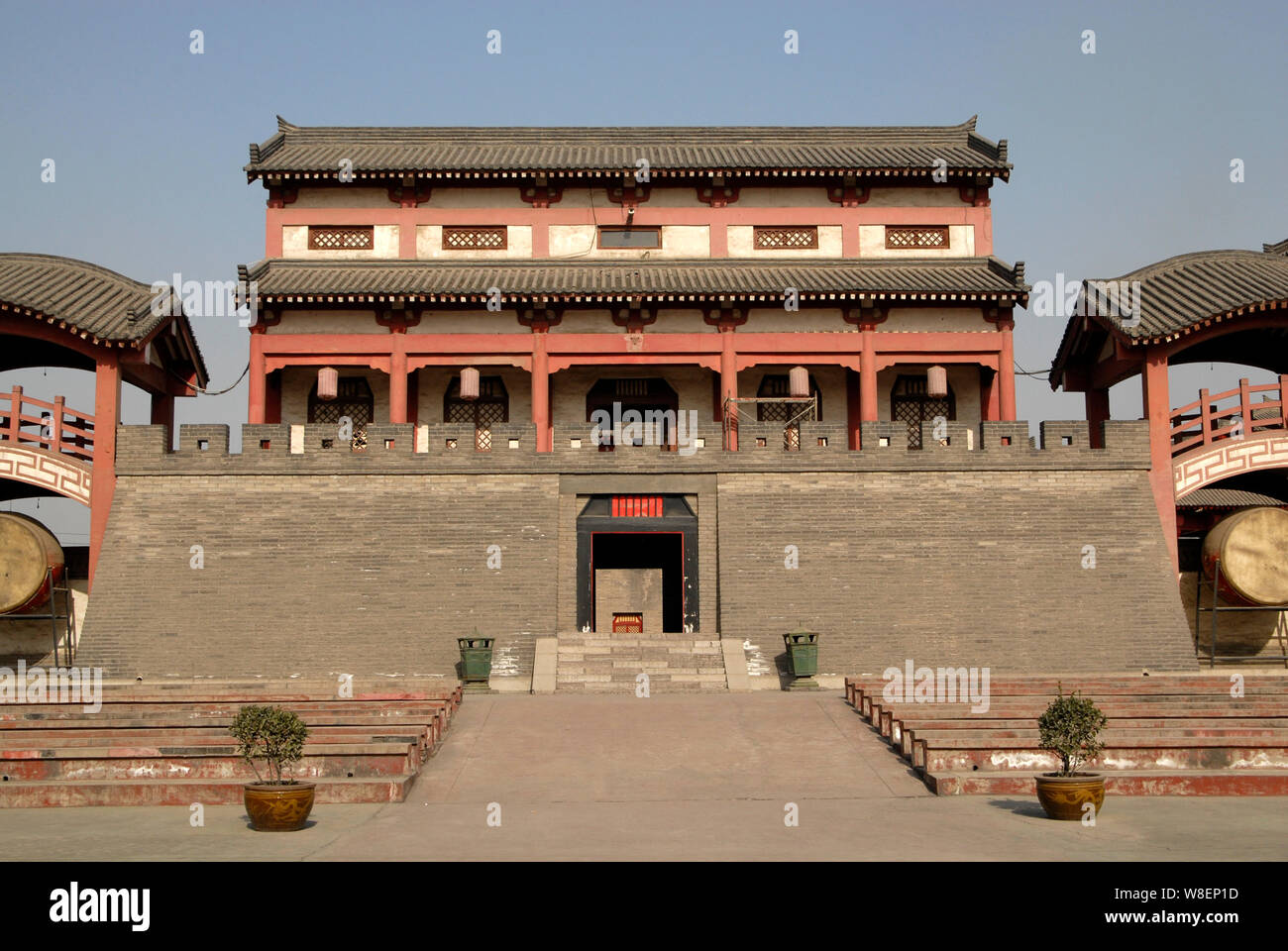
Epang_Palace_Ruins.
Conclusion
A visit to the Epang Palace Ruins is not merely a stroll through an archaeological site; it is a profound journey into the heart of China’s ancient civilization. The fusion of history, culture, and natural beauty makes this site a compelling destination for travelers seeking to understand the legacy of one of history’s most enigmatic emperors. Whether you are an avid historian or a casual traveler, the Epang Palace Ruins will undoubtedly leave you with lasting memories of China’s rich cultural tapestry.
Planning Your Visit: A Practical Guide
Discovering the Epang Palace Ruins: A Practical Guide
Visiting the Epang Palace Ruins (阿房宫遗址) offers an enriching experience steeped in Chinese history and culture. Nestled in the Xi’an region, this site provides a unique opportunity to explore the remnants of what was once envisioned as a grand imperial palace. Here’s everything you need to know to make the most of your visit.
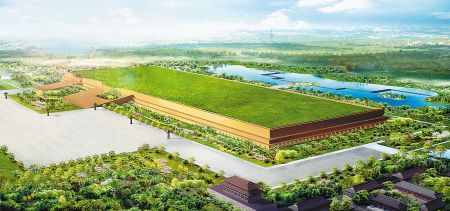
Epang_Palace_Ruins.
Getting There
Location:
The Epang Palace Archaeological Site Park is located in Fengdong New City, within the Xi’an-Xianyang New Area. The park is easily accessible, making it convenient for travelers.
Transportation Options:
– Public Transit: Take bus No. 302, which provides a direct route to the site.
– Taxis and Rideshares: Taxis and rideshare services are readily available throughout Xi’an and can take you directly to the park.
– Bicycles: For the more adventurous, consider cycling to the site. Xi’an has bike rental services that allow you to explore the city at your own pace.
Admission Information
Ticket Price:
– Free Admission: There is no charge to enter the Epang Palace Ruins, making it an excellent option for budget-conscious travelers.
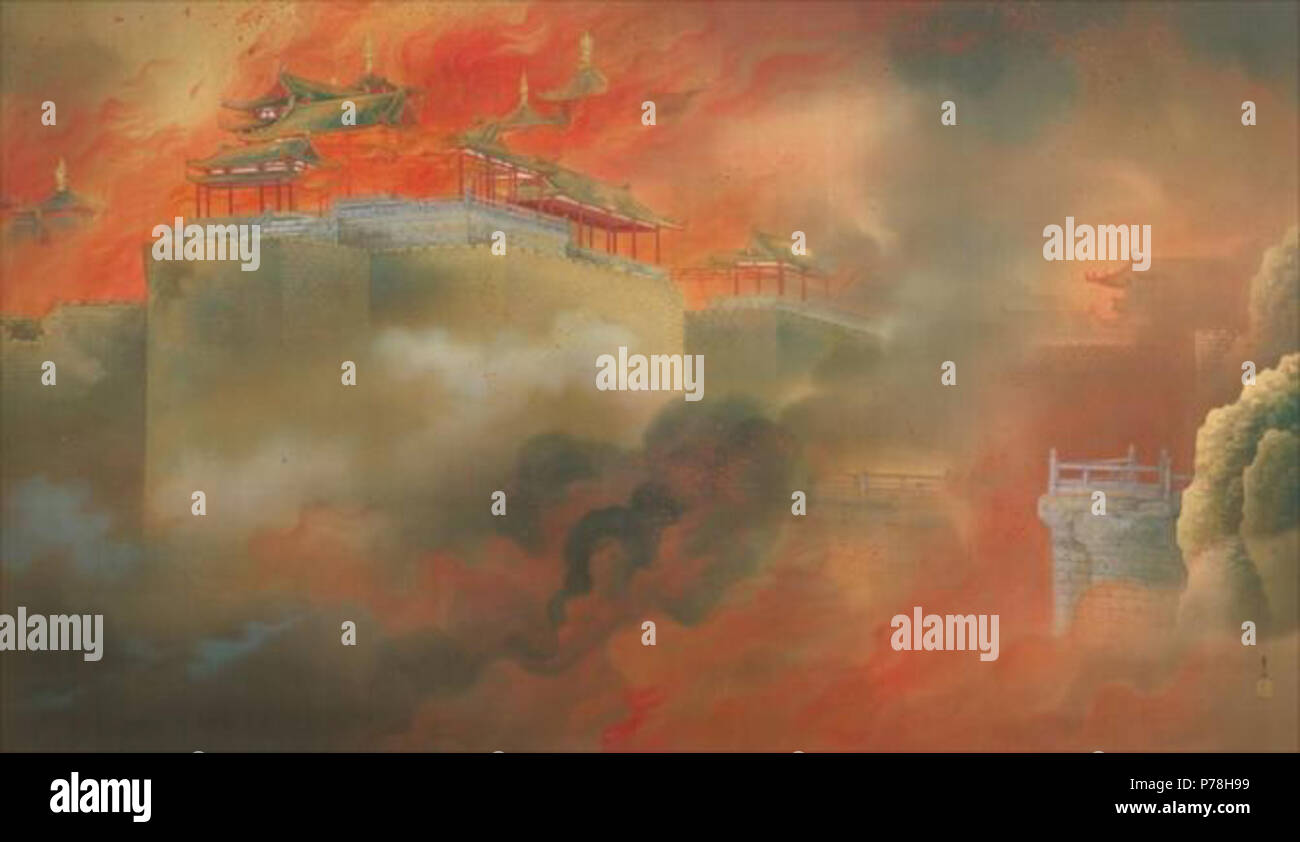
Epang_Palace_Ruins.
What to Expect
Historical Overview:
The ruins of the Epang Palace are recognized as one of the largest palace foundations in the world. Although the palace was never fully constructed and was reportedly destroyed by an insurrection, its legacy lives on. The site has been declared a UNESCO World Heritage site, emphasizing its importance in Chinese cultural heritage.
Site Features:
– Main Attractions: Explore the remnants of the palace, including the front hall and various rammed earth foundations, which illustrate the architectural grandeur that was once envisioned.
– Natural Beauty: The park is adorned with thousands of purple leaf plum trees, which bloom beautifully in spring, creating a picturesque environment ideal for photography and leisurely strolls.
– Cultural Activities: The site regularly hosts cultural events and performances that showcase the rich history of the Qin Dynasty, providing visitors with engaging insights into this significant period.

Epang_Palace_Ruins.
Facilities and Amenities
Visitor Services:
– Exhibition Hall: A nearby exhibition hall offers a deeper dive into the history of the Epang Palace, featuring artifacts and informative displays about the Qin Dynasty.
– Recreational Areas: The park is equipped with picnic areas, allowing visitors to relax amidst the scenic backdrop. It’s a perfect spot for families and friends to gather.
Dining and Shopping:
While the site itself may not have extensive dining options, nearby areas in Fengdong New City feature various restaurants and shops where you can enjoy local cuisine and purchase souvenirs.
Tips for Your Visit
- Best Time to Visit: Plan your visit during the spring months to catch the plum blossoms in full bloom, or in the fall for a cooler climate.
- Photography: Bring your camera to capture the stunning landscapes and historical structures. The contrast of nature and ruins makes for striking photographs.
- Cultural Performances: If possible, check the schedule for any cultural shows or events happening during your visit, as they provide a wonderful glimpse into Qin culture.
Conclusion
A visit to the Epang Palace Ruins is more than just a historical excursion; it’s an opportunity to immerse yourself in the grandeur of ancient China. With its free admission, rich cultural offerings, and beautiful surroundings, the site promises a memorable experience for all who venture there. Whether you are a history buff or simply looking to enjoy a day out in nature, the Epang Palace Ruins will not disappoint.
Tickets: Prices, Booking, and Tips
Exploring the Epang Palace Ruins: Ticket Information and Visitor Tips
Visiting the Epang Palace Ruins, a site steeped in history and mystery, is an enriching experience for anyone intrigued by China’s ancient civilization. Here’s everything you need to know about tickets, booking, and tips to enhance your visit.
Admission Fees
- Free Entry: The Epang Palace Archaeological Site Park offers free admission, making it accessible for all visitors. This policy encourages exploration of one of the largest palace foundations in the world, recognized by UNESCO as a site of significant cultural importance.
How to Book
- No Reservations Needed: Since entry is free, there is no need for advanced ticket bookings. Visitors can simply walk in and enjoy the site at their convenience. However, if you wish to participate in specific cultural programs or workshops, it is advisable to check availability in advance.
Getting There
-
Public Transport: The Epang Palace Ruins are easily accessible via public transportation. The most convenient option is to take Bus No. 302, which connects key areas in Xi’an to the site.
-
Location: The park is located in Fengdong New City, within the Xi’an-Xianyang New Area. The exact address is:
A15 Tian Tai Road, Sanqiao, Weiyang District, Xi’an.
Visitor Tips
-
Explore the Surroundings: Beyond the ruins, the park features beautiful landscapes with thousands of purple leaf plum trees that bloom seasonally, creating a picturesque setting for photography and relaxation.
-
Cultural Programs: Don’t miss the opportunity to attend cultural shows and exhibitions that often take place in the park. These programs provide insights into the Qin dynasty’s rich history and its cultural legacy.
-
Plan Your Visit: Although the park is open for free, it can get quite crowded during weekends and holidays. For a more peaceful experience, consider visiting on weekdays or during the early morning hours.
-
Facilities: There are basic amenities available within the park, including restroom facilities and areas designated for picnics. It’s an excellent place for families to spend a day outdoors, so pack a picnic!
-
Stay Hydrated: Make sure to bring water, especially during the warmer months, as you may spend considerable time walking around the expansive site.
Conclusion
The Epang Palace Ruins offer a unique glimpse into China’s historical tapestry, and with free admission, it’s an opportunity not to be missed. By planning your visit wisely and taking advantage of the amenities and cultural programs available, you can ensure a memorable experience at this historic site. Enjoy your journey through time at the Epang Palace!
How to Get There: A Complete Transportation Guide
Getting to the Epang Palace Ruins: Your Transportation Guide
Visiting the Epang Palace Ruins, a site steeped in history and cultural significance, is an adventure that begins long before you step foot on the grounds. Located in Fengdong New City, Xi’an, these ancient ruins are accessible via various modes of transportation, ensuring a smooth journey for international travelers eager to explore one of the most renowned archaeological sites in China.
Public Transportation
1. Buses:
The most economical way to reach the Epang Palace Ruins is by bus. You can take Bus No. 302, which conveniently connects various parts of Xi’an to the site. Buses are relatively frequent, making it easy to hop on without long waits.
2. Metro:
While there isn’t a direct metro line to the Epang Palace Ruins, the nearest station is on Line 5. You can take Line 5 to Afang Palace South Station, which is within a short walking distance from the ruins. Once you exit the station, follow the signs leading to the site, and enjoy a leisurely stroll as you approach the historic grounds.
Private Transportation
1. Taxis:
For those who prefer a more direct route, taxis are readily available throughout Xi’an. A taxi from the city center to the Epang Palace Ruins will take approximately 30 minutes, depending on traffic. Ensure to have the destination written in Chinese (阿房宫遗址) to show the driver, as not all may understand English.
2. Ride-Hailing Services:
Popular ride-hailing apps like Didi Chuxing operate in Xi’an. Download the app on your smartphone and request a ride to the Epang Palace Ruins. This option provides flexibility and convenience, especially if you are traveling with a group or have luggage.
Self-Driving
If you prefer to explore at your own pace, renting a car is a viable option. Xi’an is well-connected by highways, and the drive to the Epang Palace Ruins is straightforward. Parking is available near the site, making it easy to access the entrance.
Cycling
For the adventurous traveler, cycling to the ruins can be a rewarding experience. Xi’an is a bike-friendly city with designated bike lanes. You can rent a bicycle from various rental shops around the city and enjoy a scenic ride to the Epang Palace area. This option allows you to take in the local sights and sounds along the way.
Walking and Local Tips
Once you arrive at the Epang Palace Ruins, take time to explore the surrounding park. The site features beautifully landscaped gardens, including vast expanses of purple leaf plum trees, which are particularly stunning when in bloom. Remember to wear comfortable shoes as you may want to wander the grounds and immerse yourself in the rich history of this UNESCO-recognized site.
Conclusion
No matter how you choose to reach the Epang Palace Ruins, the journey is part of the adventure. With a variety of transportation options available, you can easily incorporate this historic site into your travel itinerary. Prepare to step back in time and witness the remnants of one of China’s most ambitious architectural endeavors. Your exploration of the Epang Palace Ruins awaits!
Local Cuisine and Accommodation Nearby
Savor the Flavors of Xi’an and Stay in Regal Comfort
Visiting the Epang Palace Ruins is not just a journey through history; it’s also an opportunity to indulge in the rich culinary traditions of Xi’an and to experience luxury accommodations that evoke the grandeur of ancient China. Here’s a guide to local cuisine and nearby lodging that will enhance your visit.
Local Cuisine to Delight Your Palate
- Biang Biang Noodles (油条面)
- Description: This iconic dish features wide, hand-pulled noodles served with a spicy sauce, often garnished with chili oil, garlic, and vegetables. The name itself is a mouthful, and the flavors are equally vibrant.
-
Where to Try: Numerous street vendors and small eateries near the Xi’an city center serve this dish, but for a beloved local spot, head to Yangrou Paomo Restaurant.
-
Roujiamo (肉夹馍)
- Description: Often referred to as “Chinese hamburgers,” these delicious pocket breads are filled with tender, braised meat, typically pork or lamb, seasoned with a blend of spices. A must-try for any visitor!
-
Where to Try: Huangchao Roujiamo is famous for its authentic and flavorful offerings.
-
Yangrou Paomo (羊肉泡馍)
- Description: This hearty lamb soup is served with crumbled unleavened bread, creating a comforting dish that’s perfect for sharing. The rich flavors and aromatic spices will warm your soul.
-
Where to Try: Old Xi’an Yangrou Paomo is highly recommended for an authentic taste.
-
Pomegranate Juice (石榴汁)
- Description: Refresh yourself with a glass of freshly squeezed pomegranate juice, a local specialty that highlights the region’s abundant fruit.
-
Where to Try: Look for juice stalls along the bustling streets of Xi’an.
-
Qin Style Snacks
- Description: Explore a variety of snacks including sweet and savory dumplings, sticky rice cakes, and fried pastries in the markets surrounding the ancient city.
- Where to Try: The Muslim Quarter is a treasure trove of street food delights.
Accommodation Options Nearby
- Qin Epang Palace Resort (秦阿房宫度假酒店)
- Description: Nestled amidst the ruins, this luxurious resort offers a unique experience that echoes the imperial grandeur of ancient China. With lavish rooms inspired by the Liuguo Palace, guests can indulge in modern amenities while immersing themselves in the cultural heritage of the Qin Dynasty.
-
Highlights: Hot springs, an imperial banquet experience, and cultural shows featuring Qin history.
-
Liuguogong Hot Spring Resort (六国宫温泉度假酒店)
- Description: This resort features six themed sections, each representing one of the conquered states during the Qin Dynasty. Whether you choose a villa-style suite or a courtyard room, the ambiance is beautifully designed to reflect historical elements.
-
Highlights: Relax in on-site hot springs and enjoy exquisite dining options.
-
Grand Park Xian (西安大公园酒店)
- Description: Located a short distance from the Epang Palace, this hotel combines modern comfort with traditional Chinese aesthetics. Ideal for families and travelers seeking convenience.
-
Highlights: Spacious rooms, a wellness center, and proximity to local attractions.
-
Hilton Xi’an (西安希尔顿酒店)
- Description: For those seeking luxury and high-end services, the Hilton Xi’an offers a blend of contemporary style and historic charm, with easy access to the city’s cultural sites.
- Highlights: Multiple dining options, a spa, and an inviting pool area.
Conclusion
Whether you’re delighting in the savory flavors of Xi’an or unwinding in a palace-inspired resort, your visit to the Epang Palace Ruins will surely be a memorable experience. Embrace the local cuisine and comfort of nearby accommodations, and immerse yourself in the rich tapestry of Chinese history and culture.
Frequently Asked Questions
Frequently Asked Questions about Epang Palace Ruins
1. What is the historical significance of the Epang Palace?
The Epang Palace, built for the First Emperor of China, Qin Shi Huang, is considered one of the largest palace foundations in the world. Although it was never fully constructed and was said to have been burned down during a peasant uprising, it symbolizes the ambition and grandeur of the Qin dynasty. The United Nations has recognized its ruins as a vital part of Chinese heritage.
2. Where is the Epang Palace located?
The Epang Palace Ruins are situated in Fengdong New City, within the Xi’an-Xianyang New Area, approximately 20 kilometers from the bustling city center of Xi’an. The archaeological site park encompasses the original foundation of the palace and surrounding areas.
3. Is there an admission fee to visit the Epang Palace Ruins?
No, admission to the Epang Palace Archaeological Site Park is free. Visitors can explore the extensive ruins, gardens, and cultural displays without any charge.
4. What can I expect to see at the Epang Palace Ruins?
Visitors can explore the remains of significant structures, such as the front hall, Hero Temple, and various corridors. The park also features beautiful landscapes with thousands of blooming purple leaf plum trees, especially vibrant in spring. Additionally, there are cultural exhibitions and reenactments that showcase Qin culture.
5. How can I reach the Epang Palace?
You can reach the Epang Palace by taking bus No. 302, which connects to various parts of Xi’an. Taxis and rideshare services are also available for convenience.
6. Are there any facilities available for visitors?
Yes, the site includes amenities such as visitor centers, rest areas, and spaces for picnics. The surrounding area is designed for leisure activities, including kite flying and enjoying nature.
7. Can I learn more about the Qin Dynasty during my visit?
Absolutely! The Epang Palace Ruins Park offers various cultural programs and exhibitions that delve into the history and achievements of the Qin Dynasty. There are also performances, such as the “Jiujiu Da Qin” show, which provide entertaining educational experiences.
8. Is it suitable for families and children?
Yes, the Epang Palace Ruins are family-friendly, providing ample space for children to play and explore. The park’s amenities and activities make it an excellent destination for a family day out, combining education with recreational enjoyment.
Final Thoughts on Your Trip
As your journey through the Epang Palace Ruins comes to a close, you’re left with a treasure trove of history, culture, and the resonating echoes of an ancient empire. Here are some reflections to inspire your next adventure:
A Glimpse into the Past
Visiting the Epang Palace Ruins is more than just stepping onto an archaeological site; it’s a portal to the grandeur of the Qin Dynasty. While the palace itself was never fully constructed, its legend and the remnants of its foundation paint a vivid picture of ambition and artistry. The tales of Emperor Qin Shi Huang and his monumental projects linger in the air, inviting you to ponder the might of early Chinese civilization.
Embrace the Cultural Experience
Take full advantage of the Qin Culture shows and the immersive experiences offered at the resort. From enjoying a sumptuous imperial banquet to participating in traditional activities, these moments deepen your appreciation of the rich tapestry of Qin heritage. The resort is not only a place to reflect but also a vibrant destination where the past and present harmoniously coexist.
Nature and Serenity
The lush landscapes, especially during the blooming season of the purple leaf plum trees, provide a stunning backdrop for relaxation. Whether you’re picnicking, flying kites, or simply strolling through the park, embrace the tranquility that this historic site offers.
Connect with the Community
Engaging with local guides and fellow travelers enriches your understanding of the site. Sharing stories and insights creates a sense of connection that transcends borders, reminding us of our shared human history.
A Journey Worth Remembering
As you leave the Epang Palace, carry with you not just memories but also a renewed sense of wonder about the ancient world. The ruins may be remnants of a dream unfulfilled, but they stand as a testament to human ambition and the indomitable spirit of a civilization that shaped the course of history.
In the words of the famous poet Du Mu, “The grandeur of Epang remains in our hearts.” May your travels continue to inspire and ignite your passion for discovery. Safe travels on your next adventure!